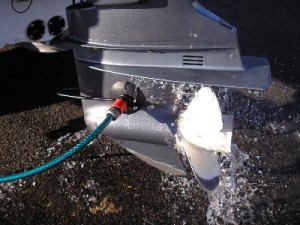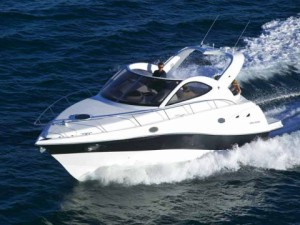
You could purchase the world’s toughest boats, but it doesn’t mean that you can get away without taking care of it. To keep your vessel sea worthy, you have to put a little bit of elbow grease and care into your boat. Here are some easy tips:
Cleaning & Care
Wash your boat regularly. Not only does routine cleaning facilitate a more pleasant and organized environment, but it also goes a long way towards counteracting the long-term effects of environmental wear and tear. Waxing and use of anti-fouling paint can also help protect your boat from the elements.
Checklists
Keep a checklist that includes everything from boat motor maintenance and winterization to boat trailer maintenance. You also want to be sure to check your fluid levels on a regular basis, and be sure that you have a good amount of Yamaha 2W oil.
Proper Mooring
One of the most common ways a boat can start to show scratches and damage is not only from when it’s in use, but from when it’s being docked. Make sure lines are securely fastened in place, neatly coiled and do not show signs of breakage.
Battery Care
Depending on the type of battery your boat uses, check to ensure that it is properly charged and that it has the correct fluid levels. Also be sure to keep your battery clean, as dampness and dirt can also drain your battery.
Electrical Components
Many boating failures occur as a result of corroded electrical systems, so keeping electrical components dry should be a regular part of your boat maintenance routine.
Consider a Boat Cover
Making an investment in a boat cover can help keep your boat clean and free of a variety of contaminants that aren’t just related to dirt or water, falling leaves and bird droppings can also cause a lot of damage if left unchecked.
Did you like this? Share it:
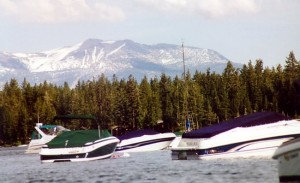 I can’t think of anything that reminds me more of summer than cruising around the lake on a fishing boat with my dad. He owned a beautiful Eagle 190, one of many G-3 boats in the Yamaha line. Before hitting the lake every year, we would set aside a day to do some basic tune-ups and maintenance, like flushing the engine and replacing the Yamalube 2M oil.
I can’t think of anything that reminds me more of summer than cruising around the lake on a fishing boat with my dad. He owned a beautiful Eagle 190, one of many G-3 boats in the Yamaha line. Before hitting the lake every year, we would set aside a day to do some basic tune-ups and maintenance, like flushing the engine and replacing the Yamalube 2M oil.


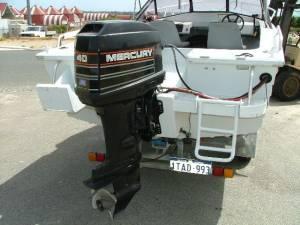 Whether you are an avid boater or just occasionally go out for recreation, it is important to understand the basics of boat maintenance. While the task of performing repairs on your craft may seem daunting, most preventative measures and basic maintenance is easy for anyone with a set of tools. By taking a little time to inspect your boat after every outing, you can avoid having to dole out big bucks later.
Whether you are an avid boater or just occasionally go out for recreation, it is important to understand the basics of boat maintenance. While the task of performing repairs on your craft may seem daunting, most preventative measures and basic maintenance is easy for anyone with a set of tools. By taking a little time to inspect your boat after every outing, you can avoid having to dole out big bucks later.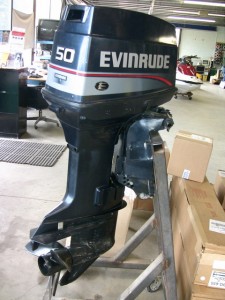 In a perfect world, we would all be able to afford precisely what our hearts desire. There wouldn’t be much diversity in the boating world, as we’d all be cruising past each other in top-of-the line boats with high-end outboard motors attached to the transom. Just think of all the luxury and convenience we would experience on a daily basis. Unfortunately, we would also miss out on many of the great stories that make boating so much fun. Old, well-worn boats have a certain character that their new counterparts lack. To an extent, the same could be said for outboards themselves.
In a perfect world, we would all be able to afford precisely what our hearts desire. There wouldn’t be much diversity in the boating world, as we’d all be cruising past each other in top-of-the line boats with high-end outboard motors attached to the transom. Just think of all the luxury and convenience we would experience on a daily basis. Unfortunately, we would also miss out on many of the great stories that make boating so much fun. Old, well-worn boats have a certain character that their new counterparts lack. To an extent, the same could be said for outboards themselves.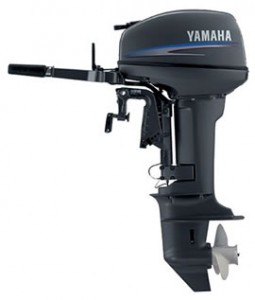 Since their introduction in the early 1900s, outboard motors have revolutionized the way in which we think about boating. Prior to that, boaters and fishermen were largely dependent on the direction of wind or – for those who felt like using oars – brute force. Outboards have taken the focus of our attentions of locomotion, allowing us to think about catching fish or just enjoy the scenery.
Since their introduction in the early 1900s, outboard motors have revolutionized the way in which we think about boating. Prior to that, boaters and fishermen were largely dependent on the direction of wind or – for those who felt like using oars – brute force. Outboards have taken the focus of our attentions of locomotion, allowing us to think about catching fish or just enjoy the scenery.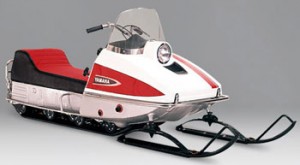 The first snowmobile-esque vehicle to be manufactured was intended for military and police transportation. In the mid to late ’50s, Bombardier created a rudimentary snow track machine capable of holding up to a dozen people. Needless to say, this machine bore little resemblance to the sleek, sporty recreational sleds of today. Bombardier released a more compact snowmobile in 1959; for the first time, such a machine was meant for public use.
The first snowmobile-esque vehicle to be manufactured was intended for military and police transportation. In the mid to late ’50s, Bombardier created a rudimentary snow track machine capable of holding up to a dozen people. Needless to say, this machine bore little resemblance to the sleek, sporty recreational sleds of today. Bombardier released a more compact snowmobile in 1959; for the first time, such a machine was meant for public use.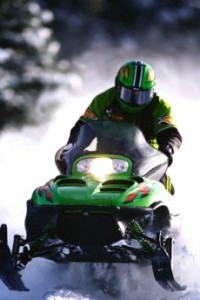 In the past few days our discussion of snowmobiles has run the gamut from power systems to track mechanics and steering. Today, it’s time to take a step back from the nuts and bolts to see the forest for the trees. Just what are the environmental implications of recreational sleds, and what plans are in the works to increase engine efficiency? Unlike the environmental effects of automobiles and boats, those of snowmobiles remain understudied and to some extent uncertain.
In the past few days our discussion of snowmobiles has run the gamut from power systems to track mechanics and steering. Today, it’s time to take a step back from the nuts and bolts to see the forest for the trees. Just what are the environmental implications of recreational sleds, and what plans are in the works to increase engine efficiency? Unlike the environmental effects of automobiles and boats, those of snowmobiles remain understudied and to some extent uncertain.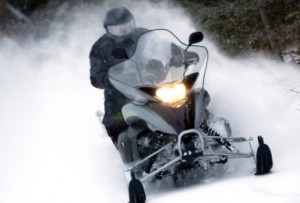 In yesterday’s installment, we took a look at the four main components of a snowmobile’s drive system: the engine, clutch, track and skis. We’ll shift gears slightly today to focus on the track in particular and the steering system in general. The track is designed to maximize traction as the sled moves along the snow. It could be likened to that of a tank, with one major difference: tank tracks are stiff and durable above all other considerations because of the role they play in warfare. Snowmobile tracks, on the other hand, are meant for optimal swiftness and maneuverability.
In yesterday’s installment, we took a look at the four main components of a snowmobile’s drive system: the engine, clutch, track and skis. We’ll shift gears slightly today to focus on the track in particular and the steering system in general. The track is designed to maximize traction as the sled moves along the snow. It could be likened to that of a tank, with one major difference: tank tracks are stiff and durable above all other considerations because of the role they play in warfare. Snowmobile tracks, on the other hand, are meant for optimal swiftness and maneuverability.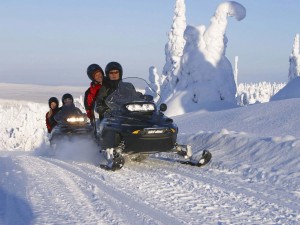 Over the last few days, we’ve discussed the ins and outs of a seasonal snowmobile tune-up – from salvaging the upholstery to checking for exterior scratches and ensuring proper fluid levels. In today’s final installment, we’ll shift over to one of the most common causes of engine failure: the filthy carburetor. It doesn’t take much more than regular hand tools, a can of carb cleaner, some ingenuity and a willingness to get your hands dirty.
Over the last few days, we’ve discussed the ins and outs of a seasonal snowmobile tune-up – from salvaging the upholstery to checking for exterior scratches and ensuring proper fluid levels. In today’s final installment, we’ll shift over to one of the most common causes of engine failure: the filthy carburetor. It doesn’t take much more than regular hand tools, a can of carb cleaner, some ingenuity and a willingness to get your hands dirty.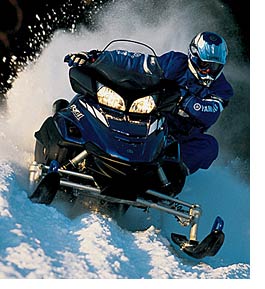 We continue today with part three in an ongoing series dealing with snowmobile maintenance. With winter temperatures already established across many areas of the country, those powdery drifts of snow likely aren’t far behind. In order to keep your sled running with reliability and efficiency all season long, it’s best to perform a scrupulous preseason tune-up. Let’s go under the hood to check the integral inner workings of the sled.
We continue today with part three in an ongoing series dealing with snowmobile maintenance. With winter temperatures already established across many areas of the country, those powdery drifts of snow likely aren’t far behind. In order to keep your sled running with reliability and efficiency all season long, it’s best to perform a scrupulous preseason tune-up. Let’s go under the hood to check the integral inner workings of the sled.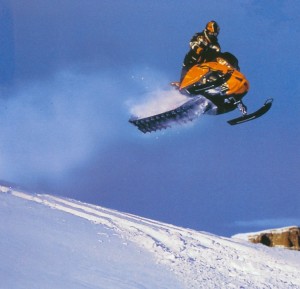 Today we pick up right where we left off in our preseason snowmobile maintenance process: the visual inspection. Having checked for cracks in the hood, we now turn our attention to the upholstery. Seat covers may become nicked and scratched with use, and in some cases they might slip right off the mounting. These details might seem trivial or superficial, and it’s true that your snow machine can operate no matter the state of the seating. Now is a good time to shore up any aesthetic flaws, however. Try gluing a similar fabric underneath hole in the leather or synthetic seating.
Today we pick up right where we left off in our preseason snowmobile maintenance process: the visual inspection. Having checked for cracks in the hood, we now turn our attention to the upholstery. Seat covers may become nicked and scratched with use, and in some cases they might slip right off the mounting. These details might seem trivial or superficial, and it’s true that your snow machine can operate no matter the state of the seating. Now is a good time to shore up any aesthetic flaws, however. Try gluing a similar fabric underneath hole in the leather or synthetic seating.